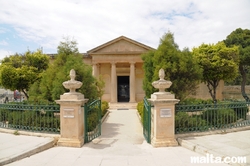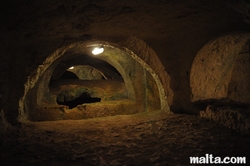Maltese historical civilizations: ancient Greeks, Phoenicians, Romans and Arabs
After the Bronze Age tribes, the next inhabitants of the Maltese Islands were first the Ancient Greeks in 700 BC, then the Phoenician traders who were followed by the Romans. The Ancient Greeks chose to settle around the current capital Valletta, as well as the Phoenicians, who sailed to Malta a century later. Romans settled instead around the old capital Mdina and Rabat.
 Carthaginians rule Malta
Carthaginians rule Malta
At that time, the Phoenicians referred to Mdina as Maleth, which means “shelter”. The Phoenicians were highly civilized people, with many great sailors and traders, who used the Maltese islands as a stop on their trade routes. Carthage (now known as Tunisia) was a city founded by the Phoenicians on the north coast of Africa and the Carthaginians ruled Malta from about 400 BC. At this time the inhabitants of Malta mostly grew olives, carobs and also produced some textiles. The Carthaginians ruled the Maltese islands for approximately 250 years, until the Romans seized Malta in 218 BC at the second Punic War. Twisting the island’s Phoenician name, the Romans called Malta “Melita”. By 117 AD the Maltese Islands were a flourishing part of the Roman Empire and even awarded the status Municipium which meant that Malta belonged to the second-highest class of Roman cities.
Christiany brought to Malta
During the Roman ruling Apostle Saint Paul was shipwrecked on Malta around 60 AD, during his travel to Rome. Even though there is no historical evidence to prove it, it is said that Saint Paul performed several miracles, and healed the father of the Roman governor of the time, Publius. Saint Paul later converted Publius to Christianity who became the first bishop of Malta. Soon the rest of the Maltese did the same and by the 3rd century AD almost all the inhabitants of Malta were Christians. The signs of an early Christian community can be seen in the Catacombs in Rabat.
 Malta under Byzantine Empire
Malta under Byzantine Empire
During the 4th century, the Roman Empire was divided into two halves, Easter and Western division. At this time Malta came to be ruled by the Eastern Roman Empire from 395 to 870 AD, which became known as the Greek speaking Byzantine Empire. Malta was ruled by the Byzantine Empire, however not much information is available from this time period.
Arabic influences to Malta
After the Byzantine ruling, Malta was conquered by the Arabs in 870 AD who ruled Malta for over 200 years. This led to the shaping of the Maltese language, that is greatly influenced by the Arabic language, while the Maltese society also was influenced by Arabic customs.

